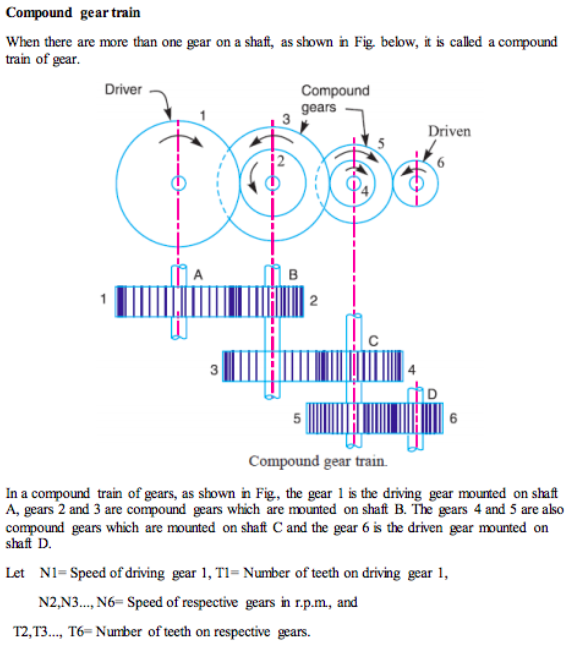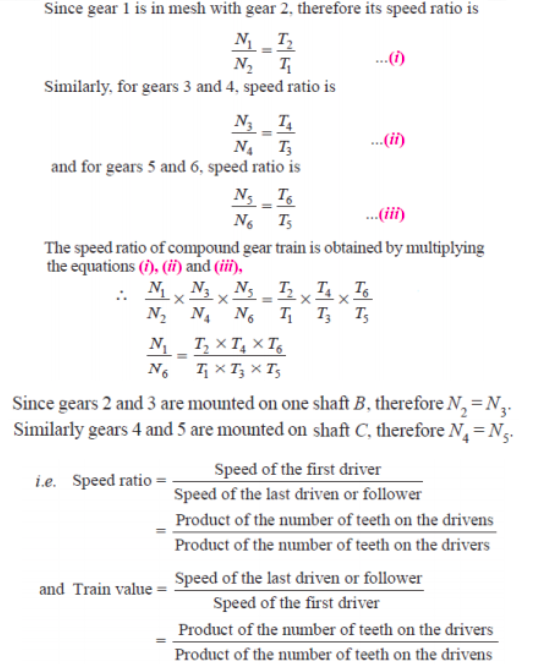Explain the compound gear train with neat sketch and write down the velocity ratio’s equation.




i. Prime circle: It is the smallest circle that can be drawn from the centre of the cam and tangent to the pitch curve. For a knife edge and a flat face follower, the prime circle and the base circle are identical. For a roller follower, the prime circle is larger than the base circle by the radius of the roller.
ii. Pitch circle: It is a circle drawn from the centre of the cam through the pitch points.
Classification of cam:
1. Radial or disc cam: In radial cams, the follower reciprocates or oscillates in a direction perpendicular to the cam axis. The cams as shown in above Fig. are all radial cams.
2. Cylindrical cam: In cylindrical cams, the follower reciprocates or oscillates in a direction parallel to the cam axis. The follower rides in a groove at its cylindrical surface. A cylindrical grooved cam with a reciprocating and an oscillating follower is shown in Fig. below (a) and (b) respectively.
Velocity of point B & C :
Vb = AB x wAB = 0.35 x 50 = 17.5 m/s
Vc = AC x wAB = 0.175 x 50 = 8.75 m/s
Sliding pair :
When the two elements of a pair are connected in such a way that one can only slide relative to the other, the pair is known as a sliding pair. The piston and cylinder, cross-head and guides of a reciprocating steam engine, ram and its guides in shaper, tail stock on the lathe bed etc. are the examples of a sliding pair. A little consideration will show that a sliding pair has a completely constrained motion.
Inversions of Double Slider Crank Chain :
1. Elliptical trammels.
2. Scotch yoke mechanism.
3. Oldham’s coupling.
When one of the links is fixed in a kinematic chain, it is called a mechanism. So we can obtain as many mechanisms as the number of links in a kinematic chain by fixing, in turn, different links in a kinematic chain. This method of obtaining different mechanisms by fixing different links in a kinematic chain is known as inversion of the mechanism.